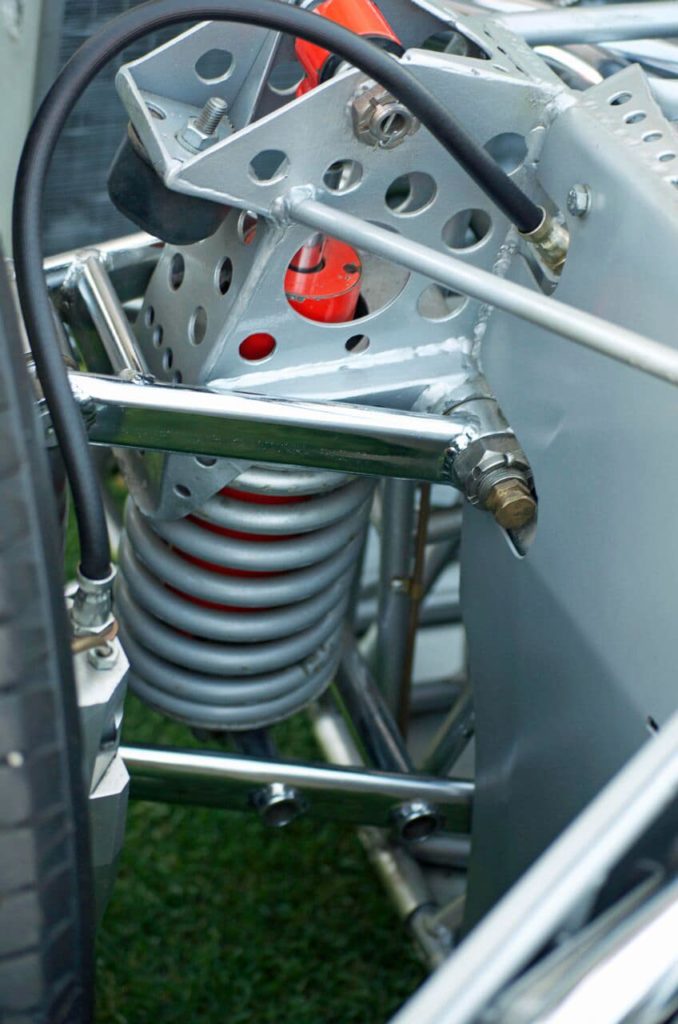The Everglades existed for thousands of years as a tropical wetland. In 1880 it was decided that the Everglades could be improved.
By 1947 over 1,400 miles of canals had been built to improve the Everglades. As a result of all these improvements we are now in the middle of a $10.5 billion 35-year restoration project. We were not good stewards of the land in Florida.
Stewardship is taking good care of an object that has been entrusted to your care and management. It could be 1.5 million acres of wetlands in Florida of it could be a Ferrari Barchetta. The concept is the same.
If you are the steward of something you really don’t own it in the conventional sense. You’re simply taking care of it for a while. A lot of people feel that they own the car that’s in their possession. They regard their cars much the same way the people who owned the land in the Everglades felt about the swamp. It’s my car, or my land, and I can do with it as I wish.
Many of us have treated our cars as if they were a swamp. Imperfections of any sort were bad. Everything had to be perfect. Restoration projects traditionally included repairing flaws that had been in place when the car was produced. We changed our cars to some new standard of perfection.
The original history of the car was removed and a new car was displayed on the show field. These show cars became historical fictions.
Our cars began to resemble the historic recreation of Williamsburg Virginia. A lovely place to visit but a town that bears little resemblance to the original.
We created perfect Austin-Healey 3000s and Jaguars with flawless shut lines. Colors never seen at the factory were protected with clear coat. No one ever thought of these cars as part of our cultural heritage.
While all of this was going on there was a growing respect amongst collectors for historical objects that had been maintained and preserved. If previous owners of an historical object had protected the object, there was no reason to alter, or restore, the object. Putting a new face on a Rittenhouse clock was thought to be an affront to the original craftsman.
Stewardship is about the management of an object. The possession of an historical object incurs legal, social and ethical obligations. An object is held in trust for the public and made accessible for the public’s benefit. Stewardship ensures that the object, which you possess, is available and accessible to present and future generations. Your responsibility is to provide proper physical storage, management and care for this object.
Restoration and Stewardship
The primary goal of stewardship is to prevent further deterioration. A restoration on the other hand is permanent change. Replacing significant parts, whether original to the car’s manufacturer or not, alters the historical integrity of a car.
If someone doesn’t understand how a component was designed performs a restoration, they may cause irreversible damage. The original maker’s work is no longer intact. Both the car’s function and research value will be diminished. The restoration of a car is a huge step and one that should not be taken lightly. If the decision is made to restore a collectible car, each step of the process must be carefully considered and always fully documented.
Your Car Was Built to Be Disposable
Cars are functional objects. They’re out in the world. Every historically significant car was at one time just a used car. More often than not, a car has been poorly repaired over the years. They got damaged, things broke, and then they got fixed. Getting to work in the morning was more important than being a good steward of the car.
No one ever manufactured a car to last several hundred years. In this respect, cars are very different from paintings. When an artist finishes a painting they expect it to last forever. When a car rolls off an assembly line, or out of a carrosserie, the hope is that it will get past the first year without a major failure.
One prominent Porsche racer related how when they returned from LeMans, all the 935 parts would be placed in a huge pile in the shop. As the cars were assembled for the next race, parts were randomly pulled from that pile. Today this same shop carefully stacks all the parts from the various cars in separate piles, so when the time comes to sell they’re actually selling the original car and not a random collection of parts.
No one is expected to preserve every car. After all you never preserved all the drawings you did in the fourth grade. It could be said though that you were a poor steward of your early artwork. As the decades pass, will it matter if the car in your garage is preserved? Or, will people say that you were a poor steward of the car you currently have stored in your garage? Will someone have to restore your swamp at some point in the future?

